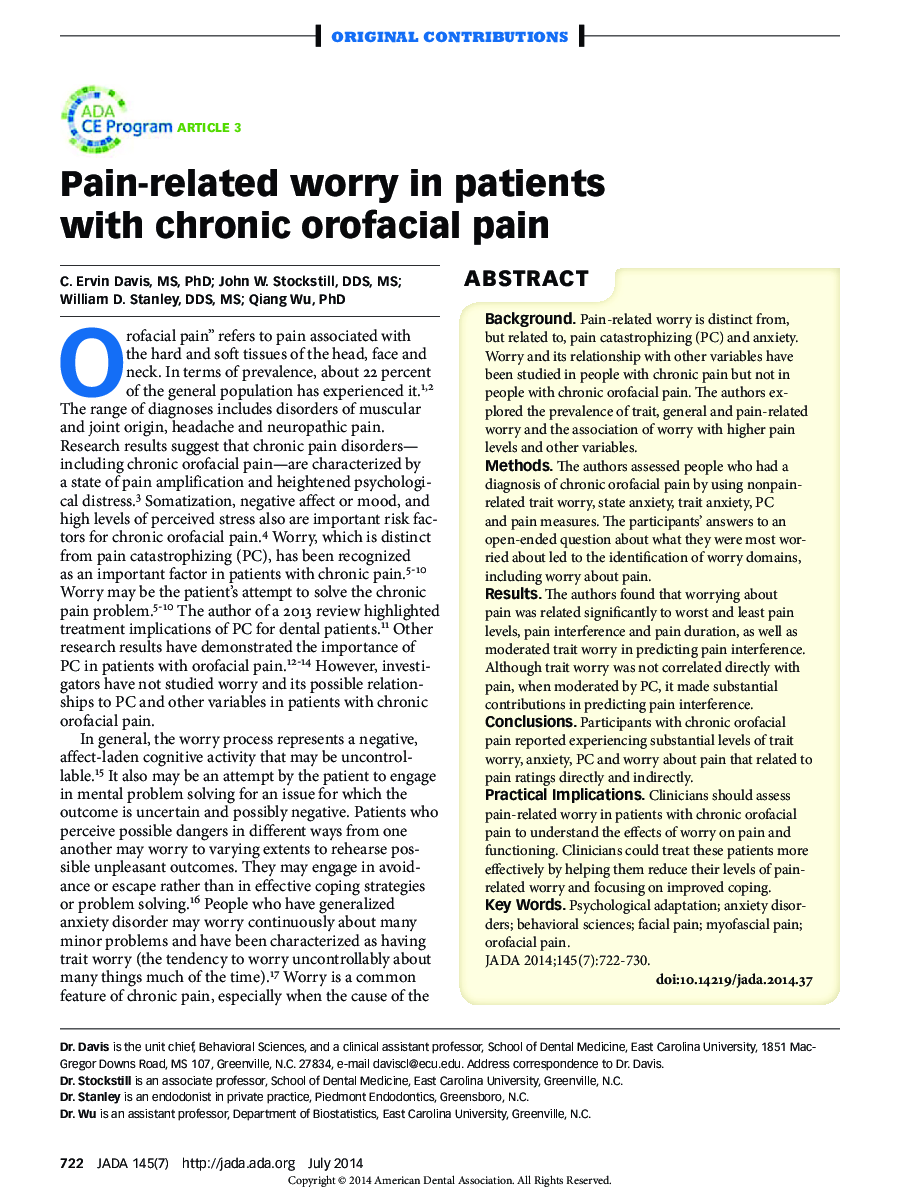| Article ID | Journal | Published Year | Pages | File Type |
|---|---|---|---|---|
| 3137006 | The Journal of the American Dental Association | 2014 | 9 Pages |
ABSTRACTBackgroundPain-related worry is distinct from, but related to, pain catastrophizing (PC) and anxiety. Worry and its relationship with other variables have been studied in people with chronic pain but not in people with chronic orofacial pain. The authors explored the prevalence of trait, general and pain-related worry and the association of worry with higher pain levels and other variables.MethodsThe authors assessed people who had a diagnosis of chronic orofacial pain by using nonpain-related trait worry, state anxiety, trait anxiety, PC and pain measures. The participants’ answers to an open-ended question about what they were most worried about led to the identification of worry domains, including worry about pain.ResultsThe authors found that worrying about pain was related significantly to worst and least pain levels, pain interference and pain duration, as well as moderated trait worry in predicting pain interference. Although trait worry was not correlated directly with pain, when moderated by PC, it made substantial contributions in predicting pain interference.ConclusionsParticipants with chronic orofacial pain reported experiencing substantial levels of trait worry, anxiety, PC and worry about pain that related to pain ratings directly and indirectly.Practical ImplicationsClinicians should assess pain-related worry in patients with chronic orofacial pain to understand the effects of worry on pain and functioning. Clinicians could treat these patients more effectively by helping them reduce their levels of pain-related worry and focusing on improved coping.
